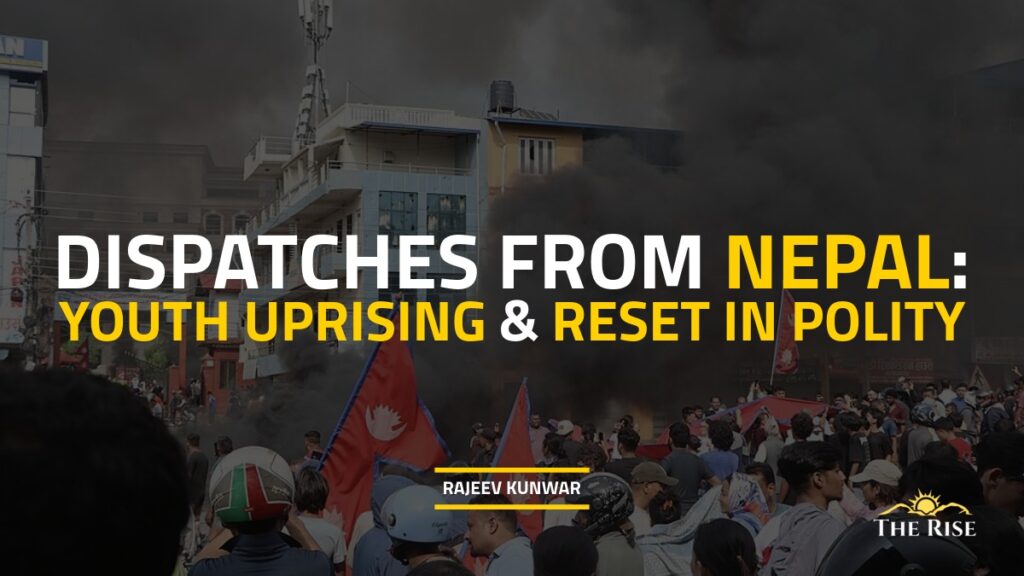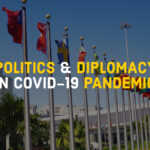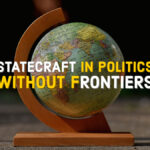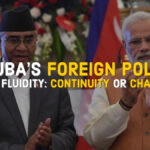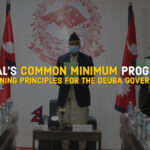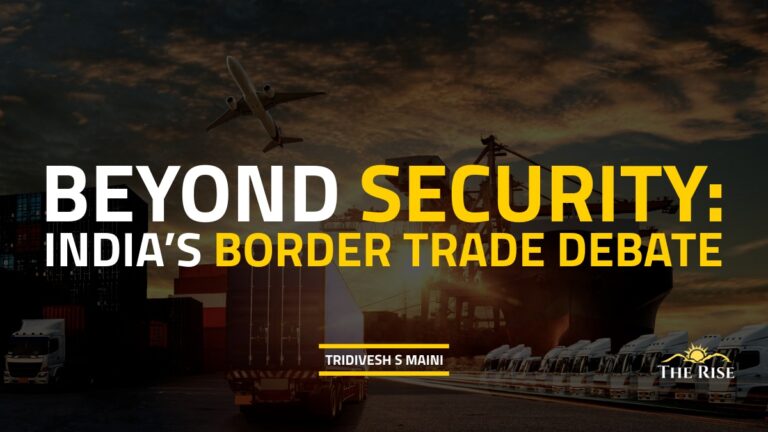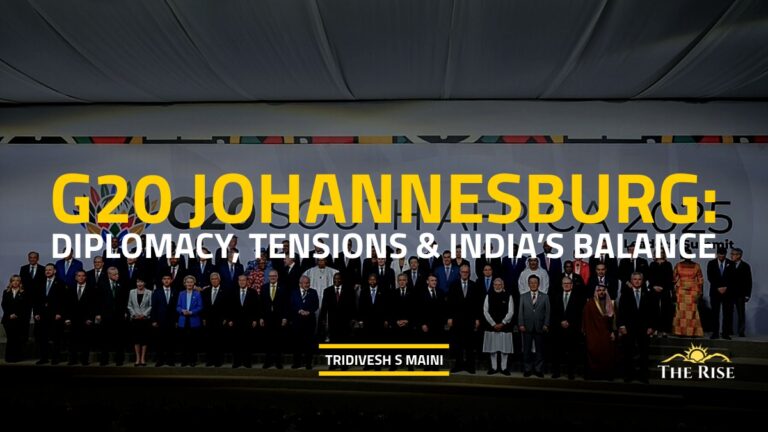A liberal democracy in Nepal has repeatedly faced illiberal attitudes and political turbulence over the decades. There may be many dispatches from Kathmandu since 1947 about Nepalese politics that have caught the world’s attention. The geopolitics of emotions and reasons have governed then, now, and in the future to survive, struggle, and exist as raison d’etat (reasons or rationale or legitimacy of the state).
The Gen Z uprising was momentous, sudden, and shocking —a rage of youth against the then-incumbent government of Nepal, including state organs, where corruption is perceived as a crucial problem. The Chief Executive and its coalition government, running the state of public and foreign affairs as usual, are no longer appealing to the ordinary, teeming, and agitating youth force, or to those who have been witnessing the media optics of politicians and administrators continuing the legacy of democracy since 1990.
A tangible political change has seen ups and downs, including some changes to polity consciousness. A change was introduced in 2015, but it was not managed well due to one reason or another, and an end to the transition continuum is not in sight. This violent rampage and rioting episode paused the democratic trajectory. Such a situation had long been apprehended, taking lessons from the 1960 putsch in Nepal’s democracy and other political violence and oppositional movements since then in the country, neighbourhood, and the world at large.
Meanwhile, the Nepal Army defends the national integrity system; the other three security agencies were unable to overcome the waves of youth uprising to contain violence. A multipronged security strategy was necessary to manage and curb rioting, but it failed to restrain the rampage. Instead of supporting peaceful protest, resistance, and satyagraha — the moral call for truth — the security response failed to control the unrest. The incident has reminded the nation of past mistakes and strengthened the resolve to act more wisely in the future.
From 1990 to 2006 (Comprehensive Peace Accord), the democratic experiment did not progress well amid the Maoist insurgency challenging the regime, including the constitutional monarchy in Nepal. By the way, the liberal norms and values that emerged in the 1980s that led to the democratic restoration in 1990 were unstable, uncertain, and non-inclusive. An autocracy of the right or the left was no good to the freedom-loving and peace-loving citizens. A liberal democracy in Nepal has repeatedly faced illiberal attitudes and political turbulence over the decades. There may be many dispatches from Kathmandu since 1947 about Nepalese politics that have caught the world’s attention. The rectangular piece, like a brick-shaped country, a misnomer of yam or gourd, tuber, or bridge, or the like, is the pivotal land adjoined to the North and the South. The geopolitics of emotions and reasons have governed then, now, and in the future to survive, struggle, and exist as raison d’etat (reasons or rationale or legitimacy of the state).
A travesty of tragic nightmare, almost every decade in Nepal exposes its vulnerability, insensitivity, instability, and ignorance to the cri de Coeur or the cry of the heart. While every change brought dividends but the share was distributed to certain ilk and groups, as alleged by the commoner. A pursuit of justice, fairness, non-discrimination, and inclusion has instilled rebelliousness and an agitated mood. On the other hand, civil society actors championing and struggling are still in the quest for their safe haven to conduct democratic struggle, democratization, and conflict resolution. They have attempted to invoke truth and autonomy in the overarching political society, leading from the back to ensure the safe voyage of democracy in Nepal. Enduring poverty, underdevelopment, and dependency syndrome continue to hinder democracy from blossoming, and liberalism and unique standards of development are yet to be realized in this fragile and brittle fraternity and sorority.
The 17th and 18th-century type nation-state, with dark chapters in modern political history, with the promulgation of the 7th Constitution based on the legitimacy of the people who are sovereign, free, and democratic, entered the first quarter of the 21st century in Nepal. In its decade of democratic exercise and practices, the governance, governmentality, and governability have been molded to deliver the change, while qualms, grudges, and complaints remain umpteen in everyday private and public affairs. But the real aspirations lie in the realization of being balanced, valid, and justifiable criticisms.
Politics is often viewed as an enigma around and across the world. The perception and misperception they hold matter every day when talking and politicking. Only the practitioner and scholar study, understand, know, profess, and act at the altar of democratic reasoning and logic to interpret, analyse, and connote the really existing politics and democracy. Democracy’s uphill battle spans three millennia. Humanity remains in the cycles of history in the classical world. A call of the ancients, and the rights and duties of free people, are now demanding and yearning for a fresh class of life from the democratic burden, getting eroded in ideals and reality. Aristotle’s cycle of constitution, where a perverted form of democracy is mobocracy, has to reverse back to democracy and not move towards monocracy. It can convey a good omen to settle the blame trading, reform, and regain the change of leadership, following its principles, ideologies, and good governance standards. The great issues of politics are unduly neglected and delegated to the media and its optics only as seen, written, and heard due to the quality and competence not matching the apex-level leadership, devoid of youth grooming.
The gerontocracy, or the rule of the old leaders, is difficult to replace without strong conviction and isms and ideas in growth, development, and maturity in youth. For many observers, this is the inflection point to serve and deliver through a right endeavour so that we can proceed with our politics, praxis, and political strategy in order to govern well and to reclaim the stakes of the governed, parties, and party system. Democracy, development, and peace are three intersecting policy issues under the aegis of liberalization, encountering illiberalism and criticism. In the history of Nepal, conflict mongering stands as testimony, and the sporadic urban and rural violence manifested in Gen Z challenged the government to install responsiveness, justice, and prosperity for the denizens, citizens, and people. There is a need to work to build the state and society better, humane, and listen to each other too. It is widely held that democracy endures paradoxes, contradictions, and vulnerability. A peaceful coexistence with civil society, political society, and international society in sync as the base of the governance matrix to enrich our understanding of the life world and the environment around us.
There is also a shared responsibility to work and do better every day, to spread liberty, justice, and truth in our society. As far as South Asia is concerned, there is scope to pursue non-violent methods, conflict resolution approaches, and viable options to settle our bickering, quarrels, raucousness, and invalid criticisms. It is best to install a good state and society, virtuous and ideal, which our ancestors professed and envisioned. Even if the dark episodes happen, there is a need to console and reconcile our conflicting position and restart to begin and commence a newness in the older version of political, economic, social, and civic activity, depending on our determination or a mixture of both of the best worlds – the old in the new or vice versa.
Disclaimer: The views expressed in this article are those of the author solely. TheRise.co.in neither endorses nor is responsible for them. Reproducing this content without permission is prohibited.
About the author
Mr. Kunwar is a politics and international relations analyst based in Kathmandu.

